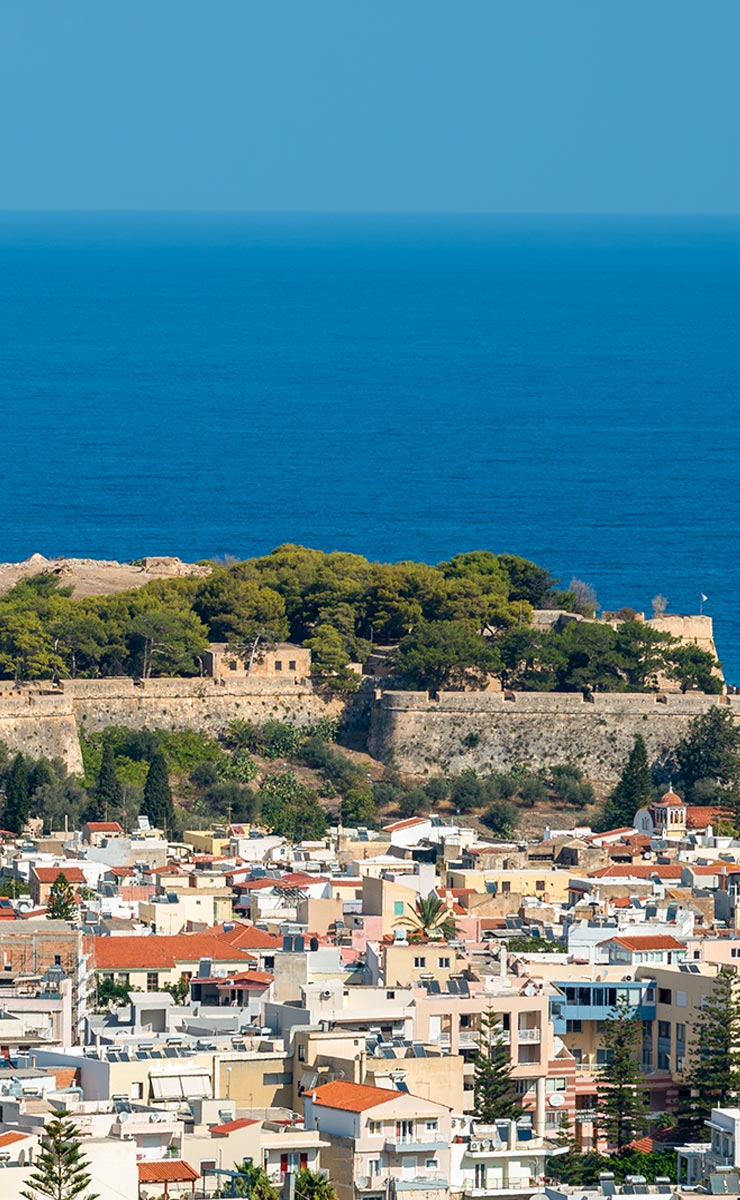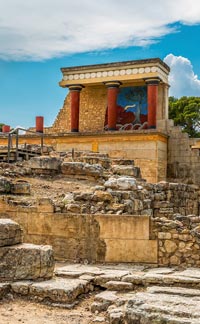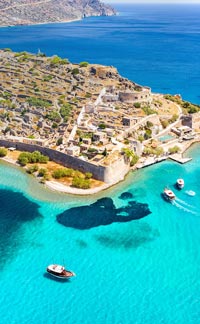Rethymnio's Italian-built citadel means Fortress" in Italian. Built on a low hill known as "Paleokastro ("Old Castle"), the Fortezza occupies the north end of a wide peninsula on which the ancient city, called Rhithymna, was built. The Fortezza is probably built on ancient Rhithymna's acropolis, which included temples dedicated to Apollo and Artemis, and, in Roman times, Diana, who was the Roman version of Artemis. The Fortezza was built between 1573-1580. It was Venice's decision to use Rethymno as an intermediate port between Chania and Heraklion that led to the construction of the harbor, the Fortezza, and the town's other fortifications.
At about 300 x 200 meters, the Fortezza is the largest and most complete citadel built by the Venetians on Crete. It was meant to accommodate all of the houses of the then-current residents of the town, to ensure their safety, but once it was finished, the Rethymnoiots refused to move in. One theory holds that this was because they were already finished rebuilding their own houses after the city had been destroyed by Uli Pasha of Algiers in 1571. But it is more likely that there simply was not enough room in the Fortezza for houses for the city's 5,200 inhabitants.
Construction began on September 13, 1573, and it took 7 years to complete. 107,000 Cretans were used as labor, as well as 40,000 animals. After the citizens refused to move in, the Fortezza became a citadel, or inner city core, housing the Venetian administrative offices and a garrison. When the citizens did finally take refuge in the Fortezza, in 1646, during the 5th Ottoman-Venetian War, the city surrendered 2 months later because of a lack of food, and the spread of disease and vermin.
The fortress had two gates and square towers. Its walls, which describe an irregular shape because of the topography of the Paleokastro, total 1,300 meters in length It has 4 demi-bastions (projecting defensive bulwarks which enable fire to be directed at attackers of the walls and of the neighboring bastions). Its main, east gate was protected by an Ottoman-built ravelin, which is a small detached "mini fort" usually placed before a fortress's curtain walls (the walls between the bastions). Its purpose is to divide the attackers and allow defenders to fire at attackers from behind as they assault the curtain walls.
The Fortezza was filled with residential buildings at the turn of the 20th century, but people began moving out after WWII. The houses were demolished, and the interior of the Fortezza is now largely empty of structures.
Open in summer (April 1- Oct. 31) daily from 08.30 - 20.30 / in winter (Nov. 1-March 31): 08.00 - 15.00, tel. +30 28310 28101 Entrance fee: 3 Euro / reduced 2 Euro





















